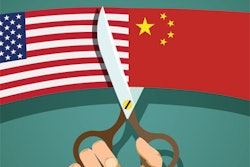
A new study by a policy institute estimates that the Trump administration's tariffs on products made in China will add $400 million annually to the cost of medical equipment in the U.S. The tariffs will add $44.6 million to the cost of x-ray parts and $33.7 million to the cost of CT scanners.
The U.S. government on July 6 implemented 25% tariffs on products manufactured in China, calling the duties necessary due to unfair Chinese trade practices. The tariffs focused heavily on high-tech equipment, including medical imaging technology such as CT, MRI, ultrasound, and x-ray systems.
They are called Section 301 tariffs due to the provision of U.S. law that allows U.S. presidents to impose duties on nations that violate fair trade practices. In a new analysis, center-right policy institute American Action Forum (AAF) analyzed the potential effects of the Section 301 tariffs on medical equipment.
The AAF found 55 types of products that can be classified as medical equipment.
| Cost of U.S.-China tariffs by medical imaging modality | ||
| Annual value before tariff | Additional cost with tariff | |
| X-ray parts | $178.2 million | $44.6 million |
| CT | $134.6 million | $33.7 million |
| Ultrasound | $86 million | $21.5 million |
| MRI | $44.9 million | $11.2 million |
| X-ray (medical, veterinary, etc.) | $40.1 million | $10 million |
| Scintigraphy | $403,000 | $108,000 |
"The Section 301 tariffs and newest retaliatory tariffs against China will impact nearly $1.8 billion of medical imports each year," the AAF wrote. "Assuming that import levels remain the same, this total translates to prices for medical equipment increasing by roughly $400 million nationwide."
The institute estimated that the cost of the tariffs will be passed on to medical practitioners and patients. With respect to patients, most of the cost will be borne by those without insurance and those with high-deductible plans. Those with Medicare will probably not be affected for the rest of 2018, as Medicare rates are not adjusted midyear.
"Presumably, some patients will face higher costs and some providers will be forced to absorb the costs they are unable to pass on to patients or insurers," the AAF noted. "If the tariffs remain in place as insurers finalize their premium and reimbursement rates for next year, it is likely at least some of the cost of these tariffs will be reflected in next year's rates."




















